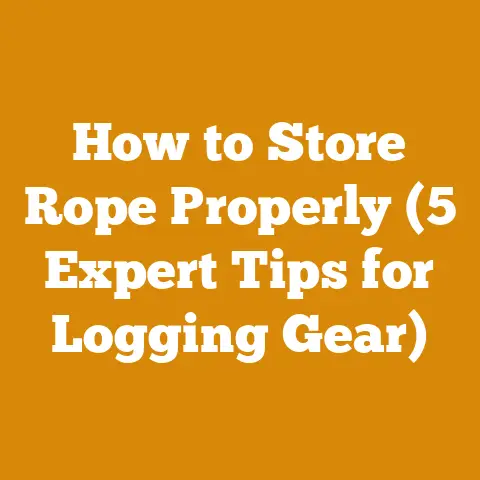Pellet Stove with Oven for Hot Tents (Wood Heat Innovation)
The grit of bark under my fingernails, the pungent aroma of freshly cut pine, the satisfying heft of a well-balanced axe – these are the textures that draw me back to the woods, time and again. And lately, the crisp, clean heat radiating from a pellet stove nestled inside a canvas hot tent has become another welcomed sensation. This article is for those of you, like me, who crave that connection with the outdoors, but appreciate a touch of comfort and efficiency. We’ll delve into the world of pellet stoves with ovens, specifically designed for hot tents, and explore the wood heat innovation they represent.
Currently, the global firewood and wood pellet market is experiencing significant growth. Fueled by rising energy costs and a renewed interest in sustainable heating solutions, the wood pellet market alone is projected to reach over $12 billion by 2027, according to a recent report by Global Market Insights. This surge in popularity is driven by the efficiency and convenience of pellet stoves, making them an increasingly attractive alternative to traditional wood stoves, especially in niche applications like hot tents.
Understanding Pellet Stoves
Before diving into the specifics of pellet stoves for hot tents, let’s establish a fundamental understanding of these heating appliances.
What is a Pellet Stove?
A pellet stove is a heating appliance that burns compressed wood or biomass pellets to create heat. Unlike traditional wood stoves that require manual feeding of logs, pellet stoves utilize an automated system to deliver pellets from a hopper to the burn pot. This process is controlled by an auger, which precisely meters the fuel, resulting in a more consistent and efficient burn.
How Pellet Stoves Work
The operation of a pellet stove involves several key components:
- Hopper: This is the storage container for the wood pellets. Its capacity determines how frequently you need to refill the stove.
- Auger: An electrically powered screw mechanism that transports pellets from the hopper to the burn pot.
- Burn Pot: A small, usually cast iron or steel container where the pellets are burned.
- Igniter: An electric heating element that ignites the pellets in the burn pot.
- Combustion Blower: Supplies air to the burn pot to facilitate combustion.
- Exhaust Blower: Vents the exhaust gases outside the dwelling through a chimney or vent pipe.
- Control Panel: Allows you to adjust the heat output, fan speed, and other settings.
The process begins when the control panel signals the auger to feed pellets into the burn pot. The igniter then heats up and ignites the pellets. The combustion blower provides the necessary air for efficient burning, and the exhaust blower removes the smoke and gases. The heat generated from the burning pellets is circulated into the room by a convection fan.
Advantages of Pellet Stoves
Pellet stoves offer several advantages over traditional wood stoves:
- Efficiency: Pellet stoves are generally more efficient than wood stoves, converting up to 85% of the fuel into heat. This translates to lower fuel consumption and reduced heating costs. The US EPA estimates that modern pellet stoves are significantly cleaner burning than older, non-EPA certified wood stoves.
- Convenience: The automated feeding system eliminates the need for frequent manual refueling. Some models can run for 24 hours or more on a single hopper fill.
- Cleanliness: Pellet stoves produce less smoke and ash than wood stoves, contributing to cleaner air and easier maintenance.
- Precise Control: The control panel allows you to adjust the heat output to maintain a consistent temperature.
- Eco-Friendliness: Wood pellets are a renewable fuel source, made from wood waste that would otherwise be discarded.
Disadvantages of Pellet Stoves
While pellet stoves offer numerous benefits, there are also some drawbacks to consider:
- Electricity Dependence: Pellet stoves require electricity to operate the auger, blowers, and control panel. This can be a problem during power outages unless you have a backup generator or battery system.
- Maintenance: Pellet stoves require regular cleaning to remove ash and maintain optimal performance. The auger and other mechanical components may also require occasional maintenance or repair.
- Pellet Storage: You need a dry place to store the wood pellets. Moisture can damage the pellets and reduce their heating value.
- Cost: Pellet stoves can be more expensive than traditional wood stoves, both in terms of initial purchase price and ongoing fuel costs. However, the higher efficiency of pellet stoves can often offset the higher fuel cost over time.
Hot Tents and the Need for Specialized Stoves
Hot tents, also known as wall tents or canvas tents, are designed to accommodate a stove for heating in cold weather. However, using a standard wood stove in a hot tent presents several challenges.
Challenges of Using Traditional Wood Stoves in Hot Tents
- Safety: Wood stoves can produce sparks and embers that can ignite the canvas tent. A spark arrestor is essential, but even with one, there’s still a risk.
- Space: Wood stoves are often bulky and take up valuable space inside the tent.
- Fuel: Hauling and storing firewood can be cumbersome, especially on extended camping trips.
- Temperature Control: Maintaining a consistent temperature with a wood stove can be difficult, leading to overheating or chilling.
- Smoke: Inefficient wood stoves can produce excessive smoke, which can be unpleasant and even dangerous inside the tent.
Why Pellet Stoves are a Better Option for Hot Tents
Pellet stoves offer several advantages over traditional wood stoves for use in hot tents:
- Increased Safety: The enclosed burn pot and controlled combustion process significantly reduce the risk of sparks and embers escaping.
- Compact Size: Pellet stoves are generally smaller and more compact than wood stoves, saving valuable space inside the tent.
- Convenient Fuel: Wood pellets are easy to transport and store, and they provide a consistent fuel source.
- Precise Temperature Control: The control panel allows you to maintain a comfortable and consistent temperature inside the tent.
- Reduced Smoke: Pellet stoves produce less smoke than wood stoves, creating a cleaner and more pleasant environment inside the tent.
Pellet Stoves with Ovens: The Ultimate Hot Tent Upgrade
Now, let’s get to the heart of the matter: pellet stoves with ovens. These innovative appliances combine the benefits of a pellet stove with the functionality of an oven, allowing you to heat your tent and cook delicious meals at the same time.
Features of Pellet Stoves with Ovens
- Integrated Oven: A small oven compartment located above the burn pot allows you to bake, roast, or warm food.
- Temperature Control: Separate temperature controls for the stove and oven allow you to customize the heat output for both heating and cooking.
- Compact Design: These stoves are designed to be compact and portable, making them ideal for use in hot tents.
- Safety Features: Built-in safety features such as overheat protection and automatic shut-off ensure safe operation inside the tent.
Benefits of Using a Pellet Stove with Oven in a Hot Tent
- Dual Functionality: Heat your tent and cook your meals with a single appliance, saving space and fuel.
- Enhanced Comfort: Enjoy warm, cooked meals in the comfort of your heated tent, even in the coldest weather.
- Versatility: Bake bread, roast meat, or warm up leftovers – the possibilities are endless.
- Convenience: Eliminate the need for a separate cooking stove, simplifying your camping setup.
I remember one particularly frigid winter camping trip in the Adirondacks. The wind howled, and the temperature plummeted below zero. We had a traditional wood stove in our hot tent, and while it kept us warm, cooking was a separate, often miserable, endeavor outside the tent. Had we had a pellet stove with an oven, the experience would have been dramatically different. Imagine pulling a freshly baked loaf of bread from the oven on a night like that!
Selecting the Right Pellet Stove with Oven for Your Hot Tent
Choosing the right pellet stove with an oven for your hot tent is crucial for ensuring safety, efficiency, and enjoyment. Here are some factors to consider:
Size and Heating Capacity
- Tent Size: The size of your tent will determine the heating capacity required. A larger tent will need a more powerful stove. Consult the stove manufacturer’s specifications to determine the appropriate heating capacity for your tent size.
- Climate: Consider the climate in which you will be using the stove. Colder climates will require a more powerful stove.
- Insulation: The insulation of your tent will also affect the heating capacity required. A well-insulated tent will retain heat more effectively.
Safety Features
- Spark Arrestor: A spark arrestor is essential for preventing sparks and embers from escaping the stove and igniting the tent.
- Overheat Protection: Overheat protection will automatically shut off the stove if it gets too hot, preventing damage and reducing the risk of fire.
- Automatic Shut-Off: An automatic shut-off feature will turn off the stove if it tips over or malfunctions.
- Carbon Monoxide Detector: A carbon monoxide detector is crucial for alerting you to the presence of this odorless, deadly gas.
Features and Functionality
- Oven Size: Consider the size of the oven and whether it meets your cooking needs.
- Temperature Control: Look for a stove with separate temperature controls for the stove and oven.
- Hopper Capacity: A larger hopper capacity will reduce the frequency of refueling.
- Portability: If you plan to move the stove frequently, look for a lightweight and compact model.
- Ease of Use: Choose a stove with a user-friendly control panel and easy-to-clean components.
Cost and Budget
- Initial Purchase Price: Pellet stoves with ovens can range in price from a few hundred to several thousand dollars.
- Fuel Costs: Wood pellets are generally more expensive than firewood.
- Maintenance Costs: Factor in the cost of regular cleaning and maintenance.
Recommended Models
While I can’t endorse specific brands without bias, I can suggest looking at models from reputable manufacturers known for their quality and safety features. Research brands that specialize in portable stoves or those with a strong reputation in the pellet stove industry. Read reviews from other hot tent users to get firsthand insights into the performance and reliability of different models.
Setting Up Your Pellet Stove with Oven in a Hot Tent: A Step-by-Step Guide
Once you’ve chosen the right pellet stove with an oven, it’s time to set it up in your hot tent. Safety is paramount, so follow these steps carefully:
-
Choose a Safe Location: Select a level, non-flammable surface inside the tent for the stove. Ensure that the stove is at least 3 feet away from any flammable materials, including the tent walls and ceiling.
-
Install the Chimney: Connect the chimney pipe to the stove and run it out of the tent through a stove jack. A stove jack is a heat-resistant fabric opening in the tent designed to accommodate the chimney pipe. Ensure that the chimney pipe is properly secured and sealed to prevent leaks.
-
Install a Spark Arrestor: Attach a spark arrestor to the top of the chimney pipe to prevent sparks and embers from escaping.
-
Provide Ventilation: Ensure that the tent has adequate ventilation to prevent the buildup of carbon monoxide. Leave a vent open or crack a window to allow fresh air to circulate.
-
Connect to Power: Plug the stove into a power source. If you are camping in a remote location, you will need a generator or battery system.
-
Fill the Hopper: Fill the hopper with wood pellets.
-
Start the Stove: Follow the manufacturer’s instructions to start the stove.
-
Monitor the Stove: Keep a close eye on the stove during operation. Check the temperature regularly and adjust the settings as needed.
-
Install a Carbon Monoxide Detector: Place a carbon monoxide detector inside the tent to alert you to the presence of this dangerous gas. Test the detector regularly to ensure that it is working properly.
Safety Precautions
- Never leave the stove unattended.
- Keep flammable materials away from the stove.
- Ensure adequate ventilation.
- Use a carbon monoxide detector.
- Inspect the stove and chimney regularly for damage.
- Never use gasoline or other flammable liquids to start the stove.
- Store wood pellets in a dry place.
Cooking with Your Pellet Stove Oven: Tips and Tricks
Now for the fun part: cooking! Here are some tips and tricks for getting the most out of your pellet stove oven:
Temperature Control
- Experiment: Pellet stove ovens can take some getting used to. Experiment with different settings to find the optimal temperature for your cooking needs.
- Use an Oven Thermometer: An oven thermometer will help you monitor the temperature inside the oven and ensure that your food is cooking evenly.
- Adjust the Airflow: Adjusting the airflow to the burn pot can affect the oven temperature. Experiment with different airflow settings to find the optimal balance between heat output and oven temperature.
Cooking Techniques
- Baking: Pellet stove ovens are great for baking bread, cakes, and cookies. Use a lower temperature and longer cooking time than you would in a conventional oven.
- Roasting: Roast meats and vegetables in the oven for a delicious and hearty meal. Use a higher temperature and shorter cooking time.
- Warming: Use the oven to warm up leftovers or keep food warm until you’re ready to eat.
Recipes for Pellet Stove Ovens
- Campfire Bread: A simple and delicious bread recipe that is perfect for baking in a pellet stove oven.
- Roasted Chicken: Roast a whole chicken in the oven for a satisfying and flavorful meal.
- Campfire Pizza: Make your own pizza in the oven using pre-made dough and your favorite toppings.
Cleaning and Maintenance
- Clean the Ash: Regularly clean the ash from the burn pot and ash pan to maintain optimal performance.
- Clean the Chimney: Clean the chimney pipe regularly to prevent creosote buildup. Creosote is a flammable substance that can cause chimney fires.
- Inspect the Stove: Inspect the stove regularly for damage and repair any worn or broken parts.
- Lubricate the Auger: Lubricate the auger periodically to ensure smooth operation.
Troubleshooting Common Issues
Even with proper setup and maintenance, you may encounter some common issues with your pellet stove with oven. Here are some troubleshooting tips:
- Stove Won’t Start: Check the power supply, hopper level, and igniter.
- Stove Produces Too Much Smoke: Check the chimney for obstructions, clean the burn pot, and adjust the airflow.
- Oven Temperature is Too High or Too Low: Adjust the temperature settings, check the airflow, and use an oven thermometer.
- Stove Shuts Off Automatically: Check the overheat protection and automatic shut-off features.
The Future of Wood Heat Innovation in Hot Tents
The trend towards efficient, portable, and versatile heating solutions for outdoor living is only going to continue. I predict we’ll see even more advancements in pellet stove technology, including:
- Smart Stove Integration: Stoves that can be controlled remotely via smartphone apps, allowing you to adjust the temperature and monitor fuel levels from anywhere.
- Solar-Powered Pellet Stoves: Stoves that can be powered by solar panels, reducing reliance on electricity and making them ideal for off-grid camping.
- Hybrid Stoves: Stoves that can burn both wood pellets and other biomass fuels, providing greater flexibility and fuel options.
Next Steps and Additional Resources
Ready to take the plunge and upgrade your hot tent experience with a pellet stove with an oven? Here are some next steps and additional resources:
- Research and Compare Models: Spend time researching different models and comparing their features, specifications, and prices.
- Read Reviews: Read reviews from other hot tent users to get firsthand insights into the performance and reliability of different models.
- Visit a Dealer: Visit a local dealer to see the stoves in person and talk to a sales representative.
- Join Online Forums: Join online forums and communities dedicated to hot tent camping and pellet stoves.
- Consult with Experts: Consult with experts in the field to get advice and recommendations.
Suppliers of Logging Tools:
- While direct rental of firewood drying kilns for personal use is rare, some commercial firewood producers may offer custom drying services. Contact local firewood suppliers to inquire about this option.
- For larger-scale timber processing, industrial drying equipment rental services can be found through online directories and industry-specific publications.
Conclusion: Embrace the Warmth and Flavor of Innovation
A pellet stove with an oven represents a significant upgrade to the traditional hot tent experience. It offers a safer, more efficient, and more convenient way to heat your tent and cook delicious meals in the great outdoors. By carefully considering your needs and following the steps outlined in this guide, you can choose the right stove, set it up safely, and enjoy the warmth and flavor of innovation on your next camping adventure.
From the crackling fire to the aroma of freshly baked bread, the textures and sensations of a hot tent equipped with a pellet stove and oven are truly remarkable. So, go ahead, embrace the warmth and flavor of innovation, and create unforgettable memories in the heart of nature. Remember, a little planning and preparation can go a long way in transforming a simple camping trip into an extraordinary experience. Happy camping, and happy cooking!






